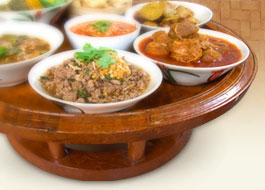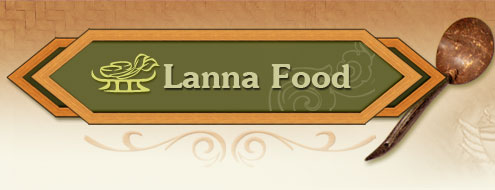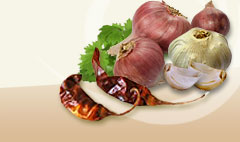|
This kind of desert is sometimes called khanom Nam-sao It is usually made for Thai New Year and other Buddhist ceremonies. (Manee Phayomyong, 2003, p. 72) Some recipes add coarsely ground peanuts or sesame seeds in the filling. Also, the filling can be made from mung beans by steaming the beans and mashing them to a coarse paste and mixing in a little salt for the sai khanom (filling). (Rattana Chaiyanan, Interview, 28 June, 2007) Nowadays the filling comes in a variety of forms such as red bean filling, etc. almost like the filling of the Chinese dumplings (Rattana Phromphichai , 1999, p. 821) |




